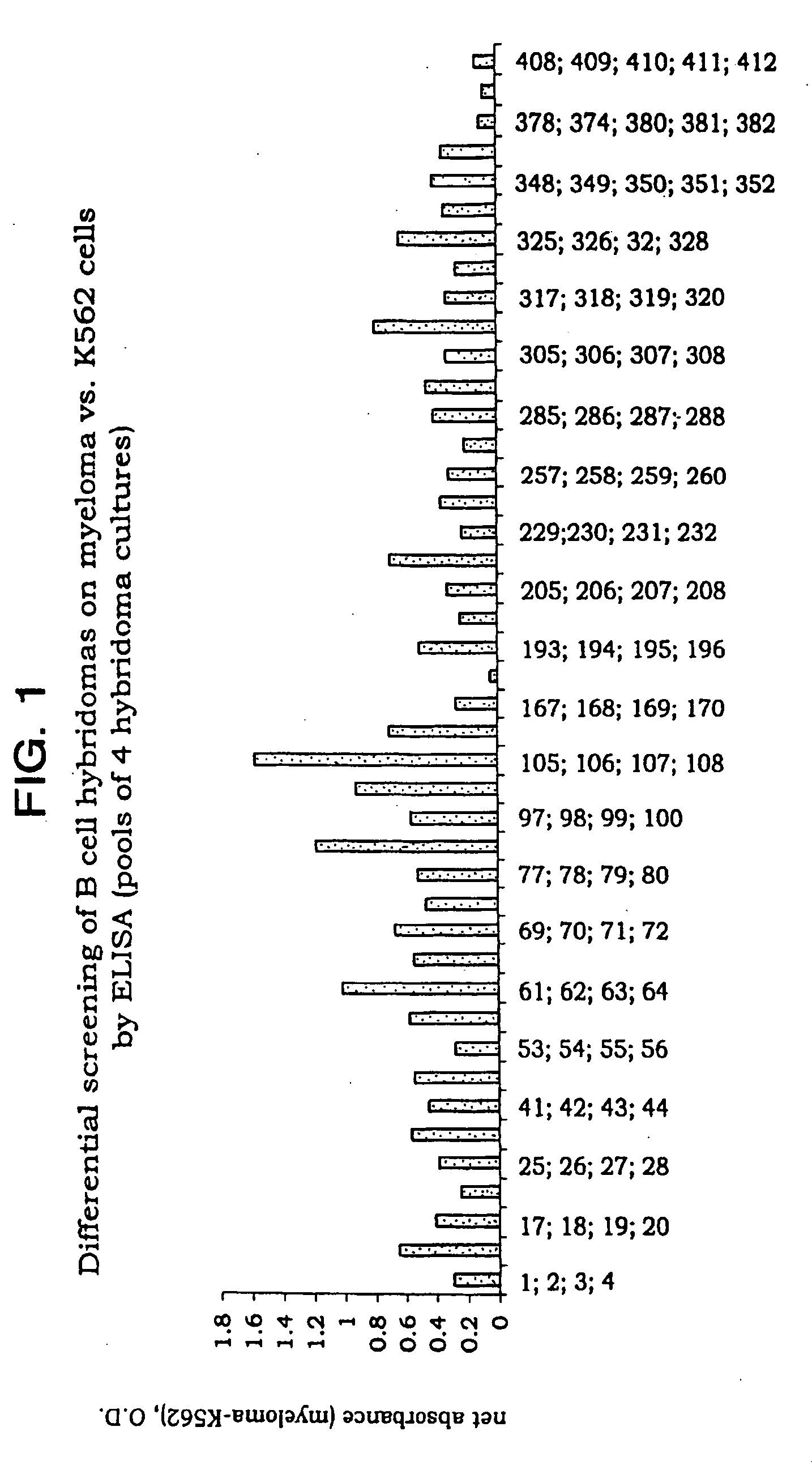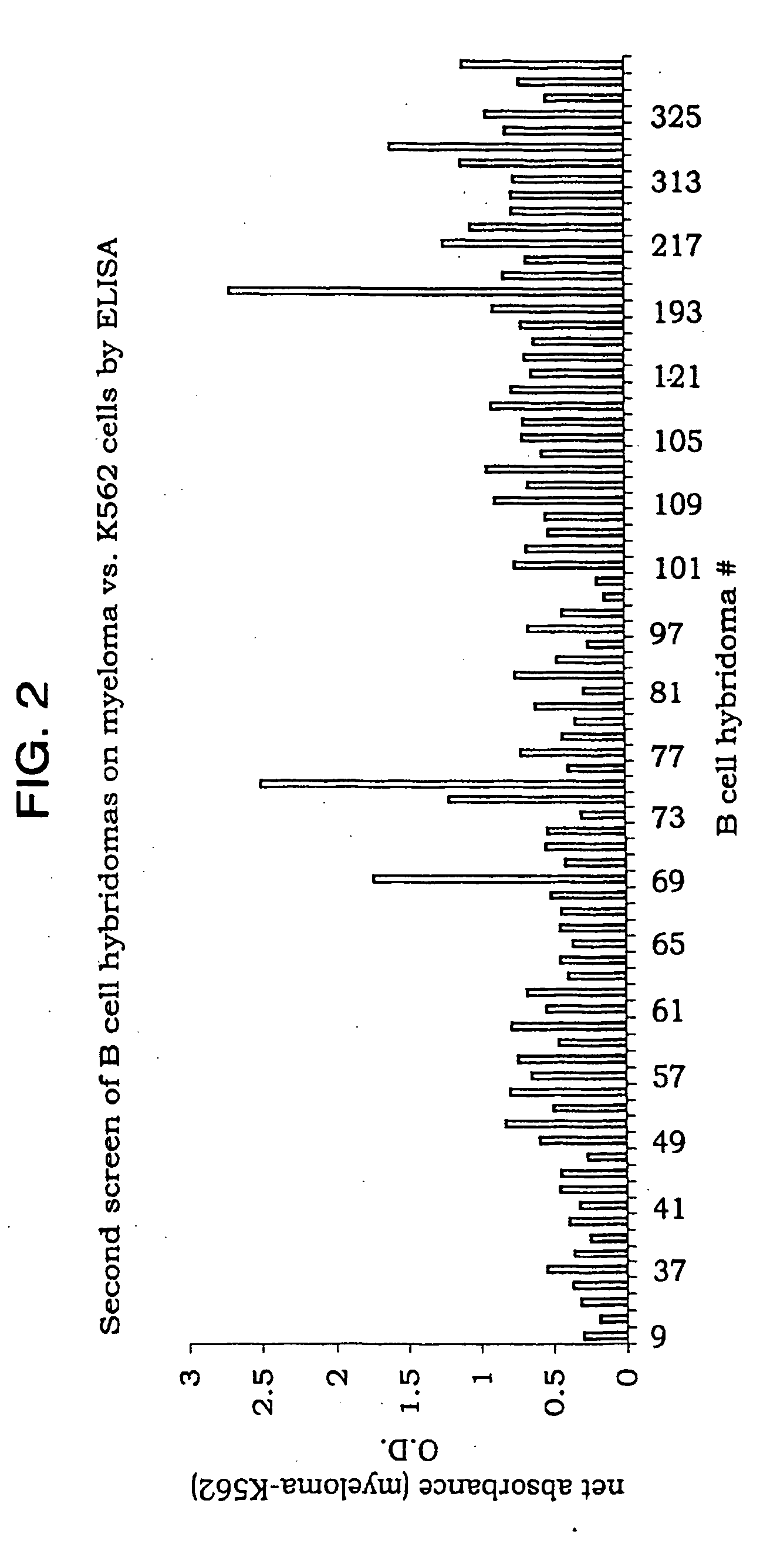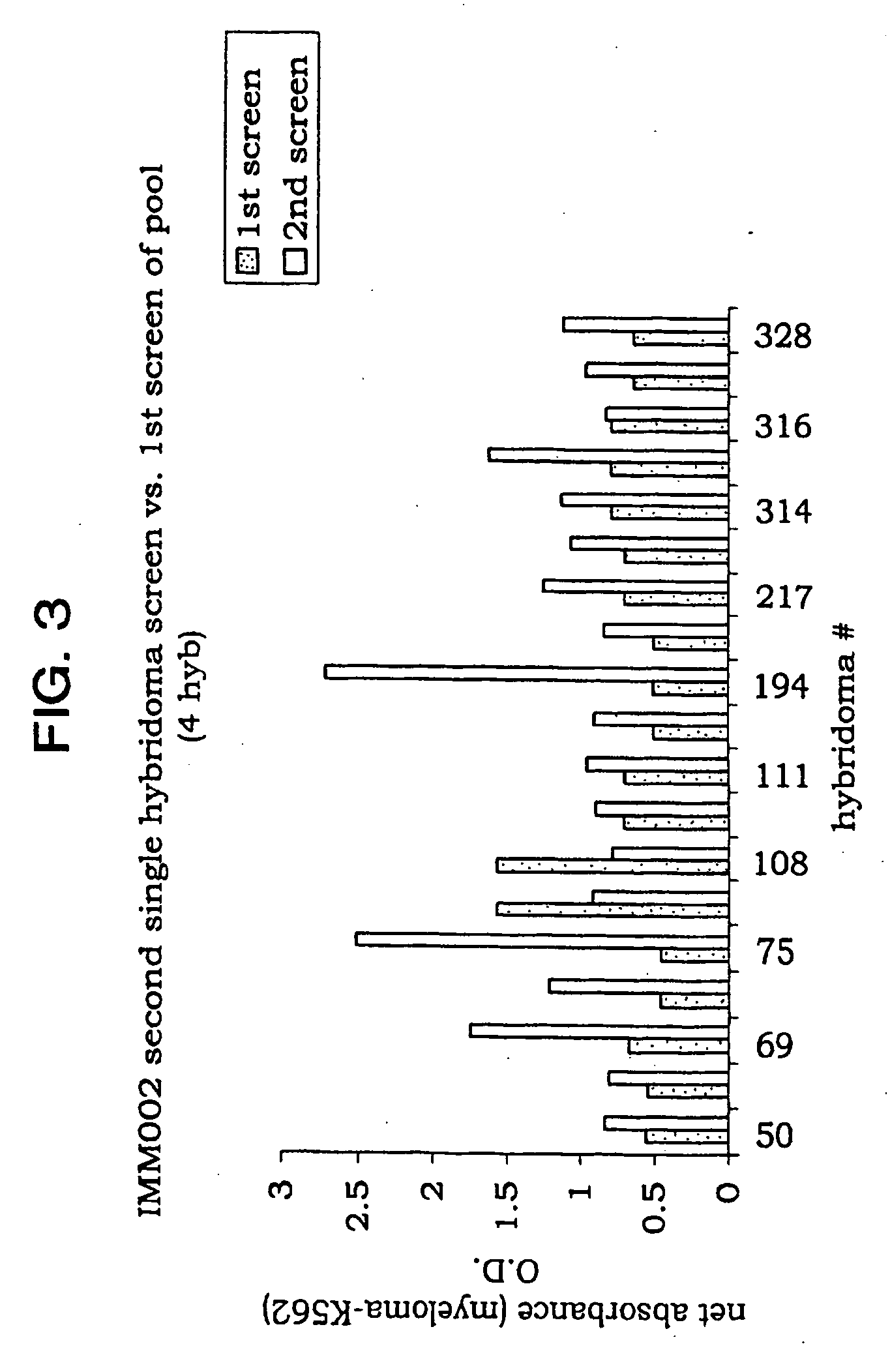Myeloma cell and ovarian cancer cell surface glycoproteins, antibodies thereto, and uses thereof
a technology of ovarian cancer and glycoprotein, which is applied in the direction of immunodeficiency disorder, drug composition, peptide, etc., can solve the problems of low cell proliferation rate and multi-, low effective therapy rate, and only slightly prolonged overall survival, so as to monitor the effectiveness of anti-cancer therapies
- Summary
- Abstract
- Description
- Claims
- Application Information
AI Technical Summary
Benefits of technology
Problems solved by technology
Method used
Image
Examples
example 1
Preparation and Screening of Hybridomas
[0074] 1. Sources of cells. Human myeloma cell lines (U266, OPM, RPM11860, KR12 and NCl H929), and chronic myelogenic leukemic cell line (K562) were purchased from the American Type Culture Collection (ATCC). Fresh human ovarian cancer, breast cancer, and liver cancer specimens were used. Cell lines of prostate cancer, LnCap (ATCC); neuroblastoma cell line, NCl H2106 (ATCC); and a cervical cancer, Caski (ATCC) were also evaluated, as well as an EBV-transformed B cell tumor, Namalwa (ATCC).
[0075] 2. Immunization. Mice were immunized with a pool of plasmacytoma cells, U266, RPMI1860 and OPM (5×106 total in 50 μl containing Ribi adjuvant, 50%), in the left footpad, and with K562 cells (5×106 total in 50 μl containing Ribi adjuvant, 50%) in the right footpad. The immunization was repeated after 14 days. The left popliteal lymph node was removed and the extracted cells were fused 3 days after the second immunization.
[0076] 3. Generation of B cell...
example 2
Specificity Assessment of Monoclonal Antibodies
[0083] Cell surface staining using a panel of monoclonal antibodies Jul. 16, 1999 analyzed by flow cytometry is depicted in FIG. 4. A strong staining of plasmacytoma cells by MA69 is demonstrated in panel F, while negative staining was demonstrated for the control cell lines, including human B cell tumor lines IM9 and HT (IM9 with isotype control, panel A; IM9 with MA69, panel B; HT with isotype control, panel C; HT with MA69, panel D) and myeloma cell line U266 with an isotype control monoclonal antibody (panel E). Furthermore, peripheral blood cells (PBMC) from normal individuals showed insignificant binding to the antibodies.
[0084] Hybridoma cell line IMM002.69.47.4 which produces monoclonal antibody MA69 was deposited on Aug. 3, 1999, with the American Type Culture Collection, 10801 University Boulevard, Manassas Va. 20110-2209, and has been assigned PTA-450.
example 3
Binding of Monoclonal Antibody to Cell Surface Glycoprotein
[0085] B cell hybridoma culture designated MA69 was shown to detect a distinct band on myeloma membranes from five human multiple myeloma cell lines (RPMI1860, U266, KR-12, OPM-1 and NCl H929) using Western blots. Four of the five myeloma cell lines showed binding to a cell surface glycoprotein with an approximate molecular weight of between about 78 and about 120 kDa. The PBMC serving as a negative control did not show binding to the antibody. In addition, no staining of two human B cell tumors (HT and IM9) was observed (FIG. 5).
[0086]FIG. 6 graphically presents the results of a repeat of the experiment described in FIG. 5 using a cellular ELISA method. In this experiment, the MA69 detected a distinct band on 5 out of 5 myeloma cell lines with varying intensities. The control membrane preparations consisting of normal PBMC and a human B cell tumor (HT) were not stained by the antibody.
PUM
| Property | Measurement | Unit |
|---|---|---|
| time | aaaaa | aaaaa |
| size | aaaaa | aaaaa |
| molecular weight | aaaaa | aaaaa |
Abstract
Description
Claims
Application Information
 Login to View More
Login to View More - R&D
- Intellectual Property
- Life Sciences
- Materials
- Tech Scout
- Unparalleled Data Quality
- Higher Quality Content
- 60% Fewer Hallucinations
Browse by: Latest US Patents, China's latest patents, Technical Efficacy Thesaurus, Application Domain, Technology Topic, Popular Technical Reports.
© 2025 PatSnap. All rights reserved.Legal|Privacy policy|Modern Slavery Act Transparency Statement|Sitemap|About US| Contact US: help@patsnap.com



